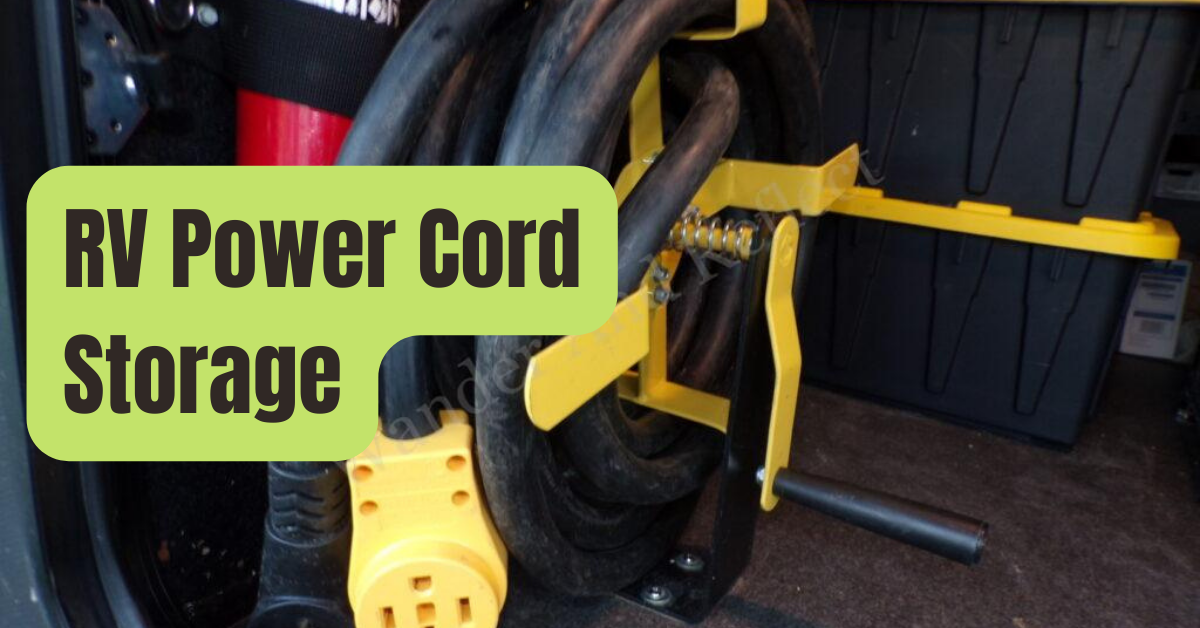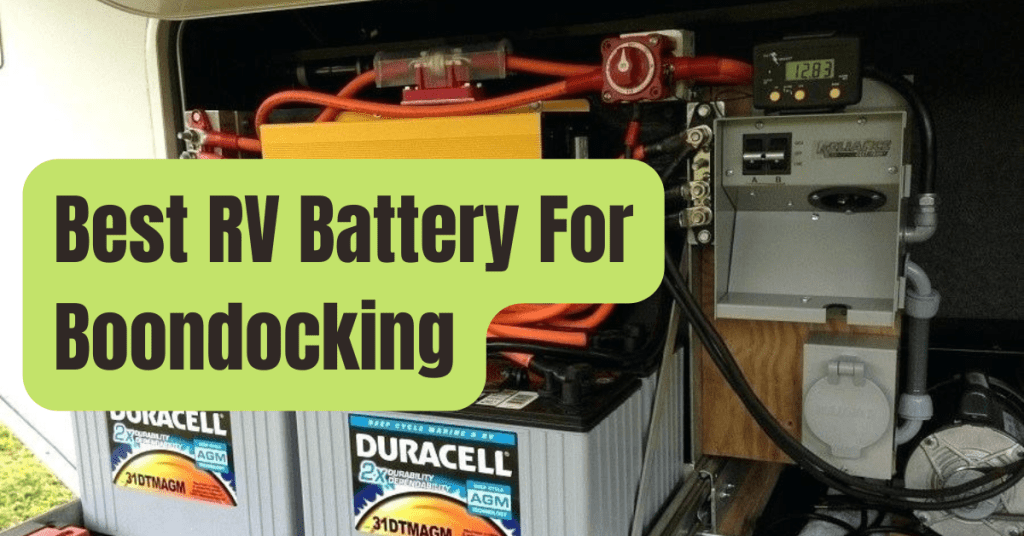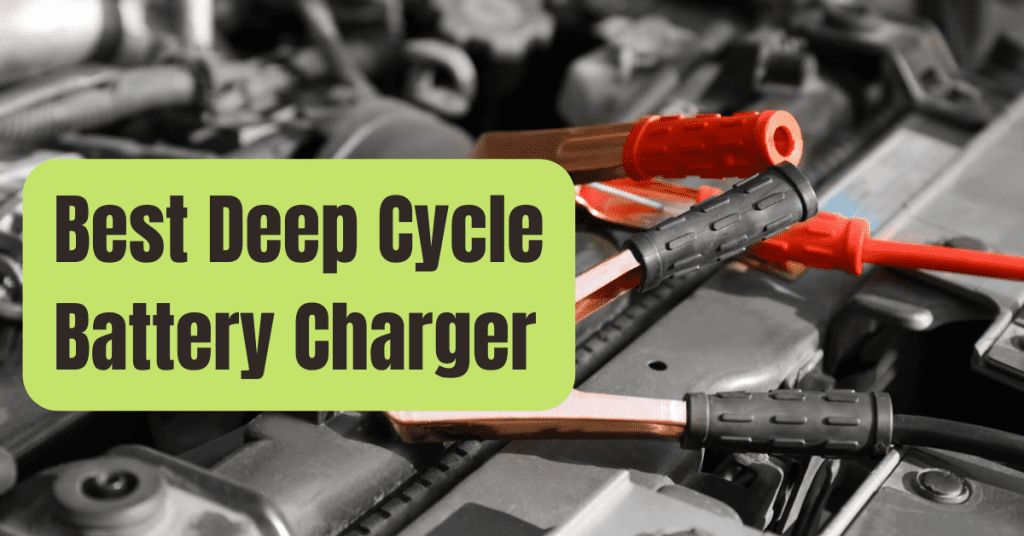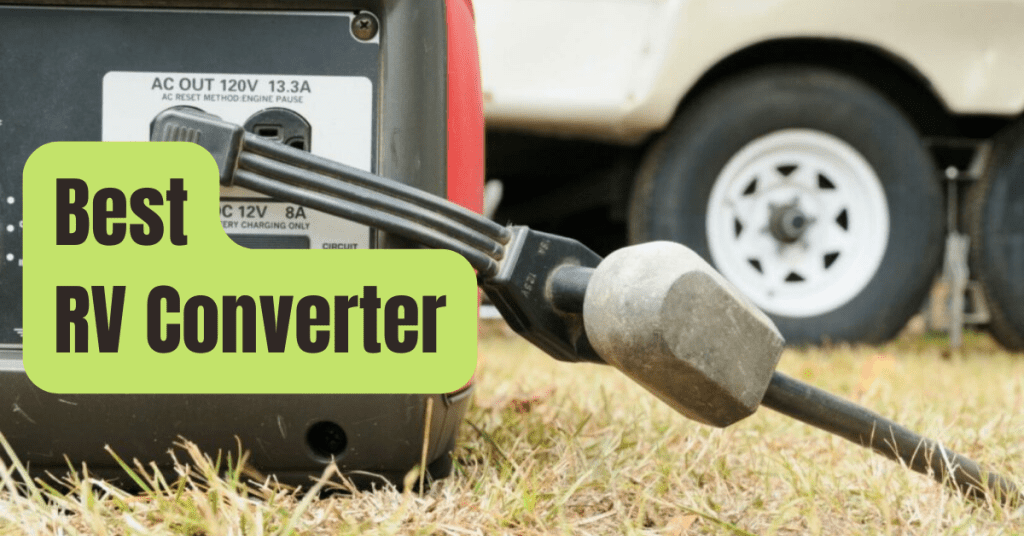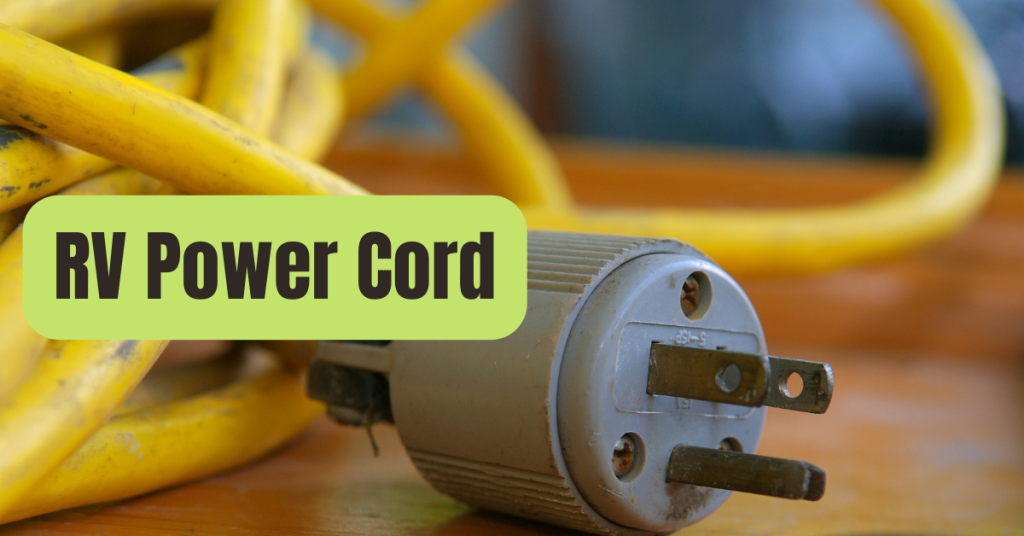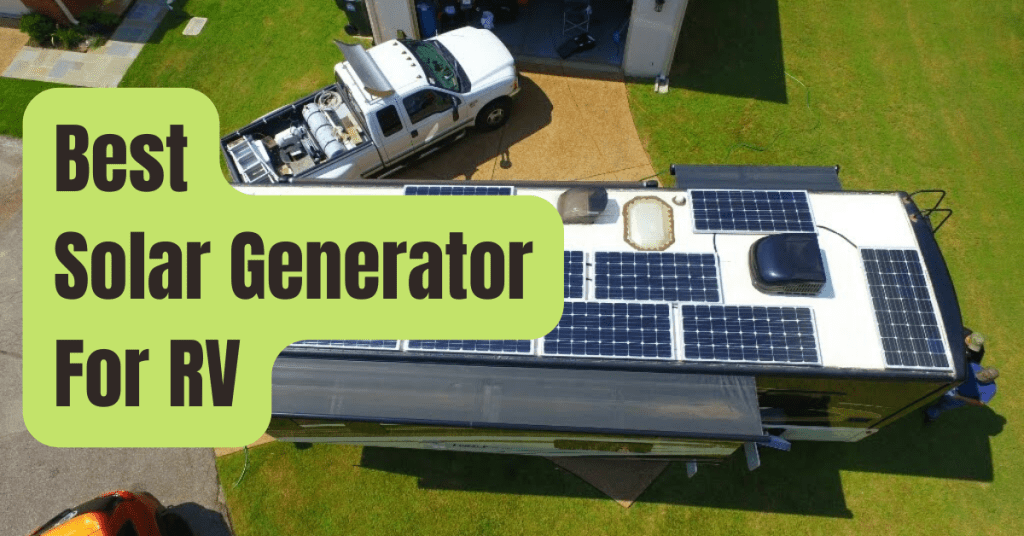The fundamental necessities and pleasures we love to enjoy outside are all connected through your RV’s electrical wire.
Why then is it so often forgotten to store your power cord? You won’t be left in the dark if you take the right care of your RV’s power line.
In light of this, what should campers know about the How, Why, and Location of an RV Power Cord Storage? It should be kept out of the way of prospective thieves and vandals, protected from damage, and stowed in an accessible compartment next to the shore power connection.
RV cables are often knotted up and set away when not in use, much like the majority of the electrical power cords we possess.
Although we try to keep them out of the way and minimize clutter, they merely become entangled in everything else.
However, you need to be careful how you handle the power wire when it’s essentially your only source of energy.
How To Store An RV Power Cord Correctly
Use bungees, velcro, or cord covers to keep your cable together while storing it.
To protect it from harm, put it in a box, bag, or on a reel.
This maintains it uncluttered and eliminates the possibility of cable tangling.
You must comprehend some of the underlying principles of RV cables in order to properly store them, since these principles affect your storage choices.
You may locate storage alternatives for either a 30 amp or 50 amp wire for your RV rather simply.
Of course, the 50 amp is larger and heavier, which may affect your storage possibilities for it.
That shouldn’t be placed in a fragile box or container.
Instead, it ought to be contained in a more robust container.
I am aware of how tempting it might be to just coil it up loosely and store it in the bottom storage box, but doing so will only harm you and your cable.
You’ll end up saving time and money by taking a few additional seconds to store it correctly.
The cable may soon get worn out and broken if you keep it out in the weather or among other stray items in your catch-all storage bins.
Your power cable does, after all, operate the whole time when lying over rocks, getting wet in puddles, and scorching in the sun’s UV rays.
Thrown in a compartment could be better, but why not give it a rest and keep it somewhere more organized and practical?
Reels, Bags, Boxes, And Wraps Are The Most Effective Methods For Storing RV Cords.
Let’s examine the advantages and disadvantages of the most popular methods for keeping your RV power line.
Reel Power Cords
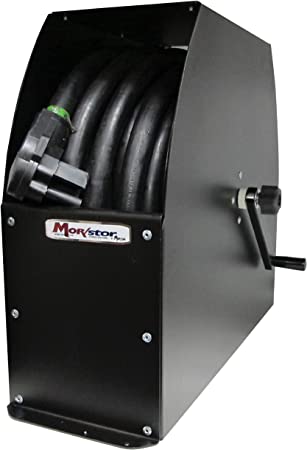
Using a storage reel is one of the fastest, safest, and cleanest methods to store your power cable.
They come in many different varieties, but they all have the same function: keeping the cable tight while keeping it orderly and untangled.
In addition to keeping your RV power cord organized, putting it on a reel will protect it from other items that are rattling around in your cargo hold.
You don’t want to take the few extra steps lightly because replacing the heavy gauge copper wires can be very expensive.
Any way you can, avoid such deterioration.
Online retailers provide a variety of reel choices, including this manual crank model.
- Manual Crank: One with a manual crank that you wound yourself.
- Electronic Crank: One that reels it in and performs the job for you.
- Enclosed Casing: When entirely wrapped, just a little portion of the cable will be visible due to the enclosed casing, which has a casing around the bottom.
- Exposed: When the cord is wrapped around the reel in an exposed reel, there is no case to protect the cord.
Reels have the disadvantages of being the most costly alternative and requiring a large quantity of storage space.
They are the finest alternative available if you have the resources (money and space).
#1. Bags For Storing Power Cords
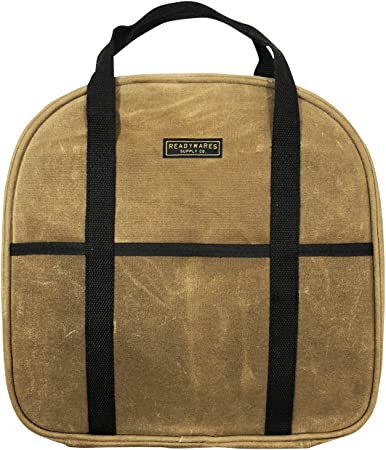
Storage bags are an excellent choice since they are effective at guarding against nicks and scratches on your cord.
If your storage site is not directly at your power connection, cable storage bags are a fantastic option since they are simple to transport.
Numerous excellent choices are available, such as this waterproof waxed canvas bag from Amazon.com.
Storage bags, which are more adaptable than boxes and reels, often fit better in RV storage compartments and can cram themselves down to fit through sometimes tiny spaces.
The flexible handles are significantly more affordable than the more rigid power cable storage solutions, and they are simple to reach for and get out of a storage space.
Using a storage bag to keep your power cable has the disadvantage that the handles may catch on locks and other objects, which is annoying.
However, the majority of them are fairly robust, making damage improbable.
They may also be punctured by sharp things, which might harm your cable.
Your wires don’t breathe effectively inside of them since they are often waterproof.
Since cables are often stored damp, ventilation becomes crucial since improper drying may cause contacts to corrode.
#2. Boxes For Storing Power Cords
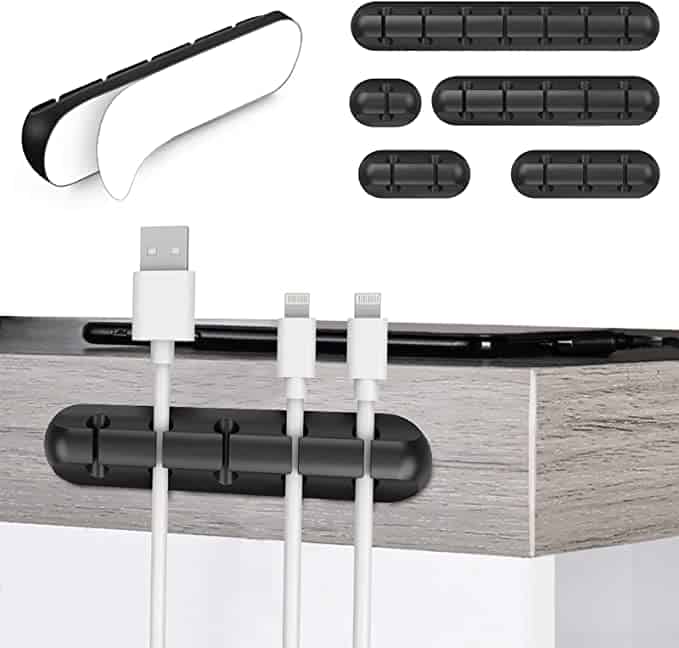
Storage boxes sit in between the reel and the bag in terms of power wire safety.
They usually have a solid, strong, and portable design.
Because the whole top can be removed to see the complete cable, storage boxes are also incredibly easy to pack and unpack.
The fact that the extra length of the power cables may be left in the storage box while the two ends are extended to the RV and power pedestal is one of my favorite features of this method.
On addition to allowing the cable ends to extend, the holes in the side also enable air to circulate through the bin, preventing moisture problems while it is being stored.
The disadvantage of utilizing a hard box to keep your RV power wire is that, depending on its size, it could be challenging to put back into a cargo hatch.
Because the open holes on the side might allow in dirt, liquids, and insects, you’ll probably want to clean it out sometimes.
#3. Electric Cord Wraps
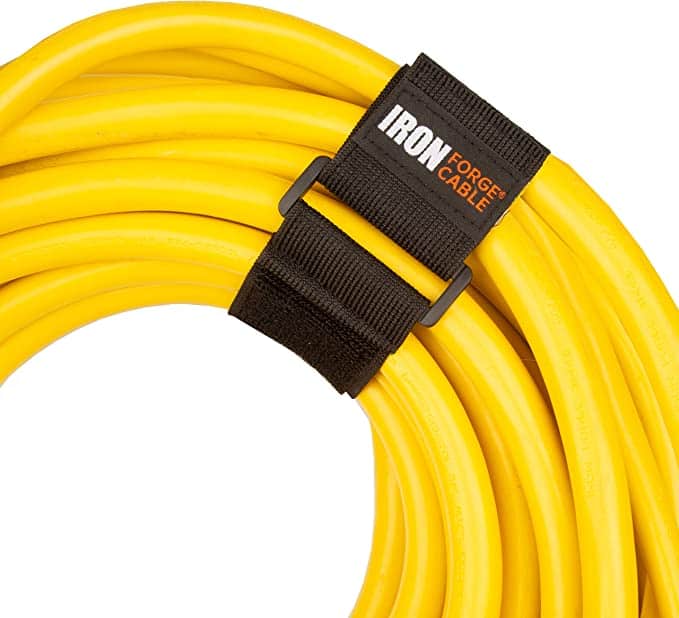
The power cord covers are our last alternative.
When it comes to securing your power cable, wraps fall short, but if you can maintain a well-organized and secure storage area, they may perform extremely well.
Wraps are more of an organizing tool for power cord management than a storage solution.
They may really be coupled with all of the other choices we covered above to create the ideal storage solution.
Cord wraps are available in multipacks, making them likely the most cost-effective option.
You can use a few on a single cord or wrap up several cords at once.
They don’t cram the cable into a container, so it may wrap up at whatever size seems most natural to it.
If you can hang your cords for storage and to help prevent the cord from becoming tangled, cord wraps work very well.
It should not be overlooked that using wraps is a very portable and easy method of storing power cords.
The number of alternatives for storing your RV power cable may seem daunting, but there is really no incorrect choice.
My preferred method is to wrap my power cable a few times to minimize tangling and then place it in a bag for security.
It simply fits into and exits from my cargo hatch, and the wraps help to coil the extra length when not in use.
Finding the one that best suits your requirements is the key.
When you choose where you want to keep your cord, a significant portion of that decision-making process will be put into action.
In a moment, we’ll get into location more detail.
I would still advise at the very least using some form of storage container to keep the cable secure and tidy, even if you don’t want to go out and get a reel for it.
It would also be helpful to have a Rubbermaid cargo box or tote.
And a simple bungee rope will keep it neat and detangled.
You may significantly lower your likelihood of: By keeping your power cable neatly bundled up in a storage container, tucked away in a bag, or otherwise stored,
- Abrasions or Cuts
- Expired Exterior Insulation
- Untidy Cords
- Bowed prongs
- Corrosion
Why You Should Store Your RV Power Cords Properly
While in use, the power cable is exposed to several severe conditions.
For it to be dependable and last a long time, storage must be secure.
RVs cost a lot of money to buy, but they rapidly become a way of life.
To get the most out of your RV lifestyle, it’s important that all of its systems, appliances, and gadgets work properly.
RVers rapidly learn that the investment doesn’t end with the RV’s purchase.
There will be a buildup of attachments and power wires.
So why not make every effort to safeguard each of those investments?
Imagine having all of the conveniences of home in your RV, complete with cutting-edge devices and appliances, but being unable to use them due to damage to your power line.
Not optimal.
To withstand the demands of the work, these cables were specifically created to be strong and weatherproof.
Consider the environment to which they are exposed:
- Rain
- Sand
- Mud
- Snow
- temperature extremes
- U.V Rays
And it is just the weather and atmosphere.
Even the use-related wear and tear from wrapping and unwinding these cables is not included.
They are trampled on and thrown aside by others.
These suckers are made to last a lifetime.
Because your RV power cable is more valuable and costly than a typical domestic extension cord, it has to be treated with care.

Its longevity is based on how it is used and cared for, much like any other power cable or electric equipment.
Let’s disregard the cost and durability of it.
Yes, you do want to ensure that it lasts a long time so you don’t have to purchase a new one every season.
However, there are additional issues to be aware of.
Another safety concern is this.
Either a 50 amp power cable or a 30 amp power chord are used to power RVs.
| 30 amp | 50 amp |
| 3,600 watts | 12,500 watts |
Make sure the cord has been properly cared for when there is so much power flowing via a single cord.
You continuously increase the likelihood that anything may go wrong with it if you don’t store it correctly.
What Position to Store RV Power Cords
You most likely already know how you want to keep your cable at this point.
Let’s now go through some of the key elements that need to be taken into account when choosing the ideal location to keep your RV power cable.
Always store your power cable in a dry, secure, and comfortable area.
It’s crucial to take into account your power cord’s accessibility, the goods you should keep it away from, and the security of your storage area.
#1. Accessibility and Usability
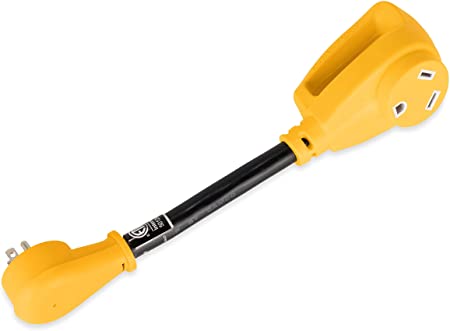
RV power cables are often kept in an outside container next to the shore power outlet.
This is a clear location since it’s a handy spot that’s normally simple to get there.
When an RVer arrives to a campsite, their process for setting up usually includes a number of particular things.
To speed up setup, it is practical to have these things close together.
These things often consist of sewage lines, leveling blocks, and water hoses.
It facilitates an easier arrival to have a storage space specifically designated for these kinds of products.
Visit our suggested RV Essentials Page to discover our camping necessities.
A number of adaptors will likely be included with your power cable so that it may be connected into various kinds of outlets.
Connecting to a 15A plug at home will go much more quickly if adaptors are kept with your power cable rather than scattered throughout your RV.
Consider your own preferences for convenience as well as how easily accessible things should be.
If you use your RV often, your habits and processes are undoubtedly perfected.
That calculation has to take this into account.
Consider picking a storage compartment between the exit of your rig and your shore power connection so you may grab your cord on the way to attach it if you are unable to store your power cable in a compartment near your connections and other setup equipment.
On average, 50 amp power wires might weigh 20 to 30 pounds.
Therefore, where you store it should also take it into account.
You want it placed someplace accessible and practical for any lifting restrictions you may have if you suffer from back pain or have difficulty moving heavy objects.
#2. Storage Requirements for Power Cords
Since your cable is often wet when it is stored, storage spaces that are poorly ventilated might gather moisture.
The contacts of your cable corrode with time as a result of moist circumstances, resulting in weak connections.
Due to the additional resistance it adds to the circuit, this might be problematic with electrical currents of up to 30 or 50 amps.
Any nicks or cuts in the cord’s outer covering that may be present might also be penetrated by excessive moisture.
The inner conductors’ insulation may degrade over time as a result of moisture, which makes it possible for them to short circuit and provide a fire risk.
The things that are kept next to your power cable should also be taken into consideration, particularly if they contain chemicals or solvents.
For good reason, these kinds of things, such bleach, cleansers, and degreasers, are often kept in the outside compartments.
Any chemical spills of this kind on your power cable might undermine the outer jacket and result in irreparable harm.
Other objects with sharp metal edges, such as saws, axes, and cutting blades, are also evident hazards to avoid, yet they often hide and go unnoticed.
Major issues might arise from damage brought on by rubbing against these kinds of objects.
Extreme cold is the last factor to consider.
If your power cable is moved or bent when the copper conductors and outer insulation are brittle from exposure to very low temperatures, it might result in damage.
The winter months are often avoided by RVers, but storing your power cable in a warmer location can assist minimize damage during this time of year.
Be mindful of any risks that might occur from other objects kept in the same compartment when choosing where to put your RV power cable.
While keeping your cable in a case will reduce possible harm, anything around might endanger your RV power cord while you’re driving at high speeds.

#3. Your Power Cord’s Security
When it comes to keeping your RV power cable secure, there are two key considerations.
The first one has to do with whether or not your cord is stable and cannot flip or bounce.
Being a soft metal, copper may fail more quickly the more it is bent, twisted, and crushed.
Your power cord’s lifetime may be significantly increased by keeping it out of the way of other objects and by avoiding unneeded kinks and twists.
If your RV power line is secure against theft, vandalism, and animals, that is the second security factor to consider.
Mice, squirrels, and chipmunks like chewing on electrical cables.
They just know it will drive you nuts, not because they taste nice.
When not in use, keep your cord kept in a place where animals cannot reach it.
Whether you choose to store the cord in your RV, truck, or another vehicle, you need make sure it is out of sight and reach of shady characters.
Because of their high gauge conductors, which contain a significant amount of copper, RV power cables are very valuable as scrap or for use by others.
It may be a ravenous animal, someone attempting to take the cable because they truly need one, or someone attempting to disassemble it so they can sell the copper.
Whatever the justification, keep in mind that RV power wires are costly to buy and should never be left exposed.
To Sum Up
Following a few simple guidelines will help you receive the finest performance and longest life possible from an item as important as your RV power cord:
- To prevent damage, place it in a container with a lid.
- Put it in a convenient location close to your surge protector and your rig’s shore power connection.
- Ascertain that it is hidden from prospective thieves and vandals.
In an RV, storage space is always at a premium, so effective organization is essential to making a tiny area work for you and your family.
Your excursions will be lot simpler and the lights will remain on if you take a proactive approach to storing and safeguarding your RV power line.

